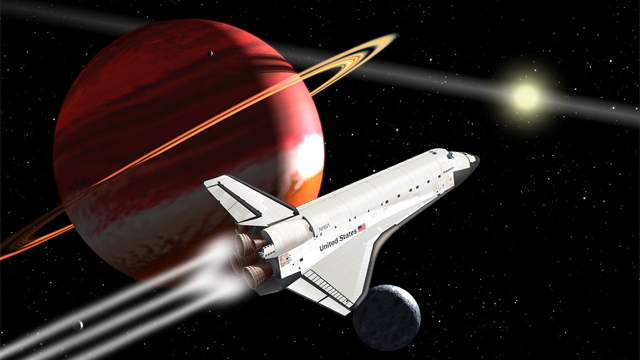
Once again I have drifted off thinking about the size and scale of space--the things in it and the distances between them--and once again have brought pen and paper, math, and a spreadsheet to bear on the question: are the stars in our destiny, or is the notion of physically reaching them (in person, at least) beyond the available realities?
With all of the science fiction stories devised to get their characters to other stars not only within their lifetimes, but sometimes within a few paltry days, it’s easy to think of interstellar travel as something we might eventually get around to, given the technology, time, and money. We just need to figure out how warp drive or hyperspace work, and how to exploit them, and we’re off!
But putting teleportation and wormhole expressways and their ilk on the shelf labeled, “Cool, but probably just fancy” for a moment, what are the Newtonian-Einsteinian requirements to get us to, say, the nearest known extrasolar planet, which orbits the star Epsilon Eridani, 10.4 light years away from us? It’s a gas giant planet larger than Jupiter and orbits well beyond its star’s habitable zone, but it’s a planet after all, and we star-seekers just love planets.
Now the math that will get us there. I had to assume a mass for our would-be starship, conservatively chosen as 2000 metric tons, or about the weight of the Space Shuttle. In reality that’s far too small a ship for any human interstellar journey, unless the crew are all frozen. And keep in mind, my calculation does not take into account the weight of any fuel we need to carry with us. I’m also choosing a top cruising (coasting) speed of one-tenth the speed of light, or 30,000 kilometers per second. A tenth light speed is pretty darned fast, but not so fast that we need to worry much about relativistic mass—that is, the increase in the spaceship’s effective mass when traveling a significant fraction of the speed of light.
If our engines can produce thrust sufficient to accelerate our 2000 ton spaceship at a rate of “1 gee”, or one Earth-gravity equivalent (~10 meters per second, per second), then to achieve a velocity of one-tenth light speed we’ll need to run those engines for about 35 days, non-stop. We should assume our engines are powered by nuclear fusion or even antimatter reaction (possible future technologies that today present technical challenges, but which aren’t on that shelf of sci-fi fancy).
